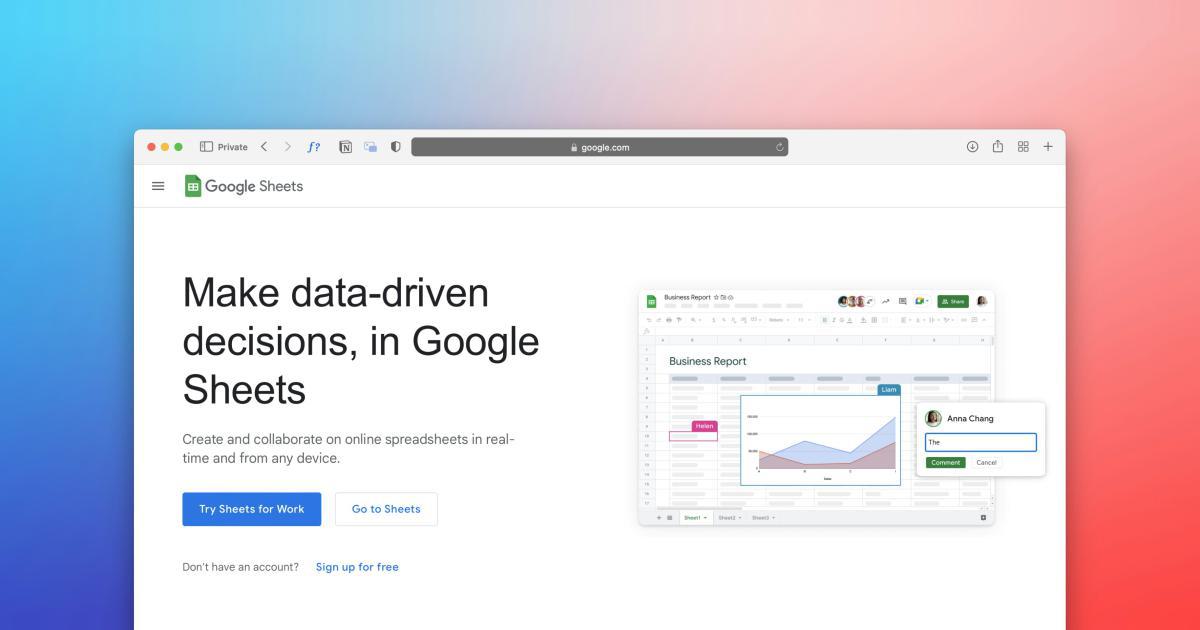7 Vital Google Analytics Channel Groupings To Track Revenue


Understanding the various traffic sources and channels that drive revenue is crucial for any successful online business. Google Analytics provides a powerful tool for analyzing these channels and gaining valuable insights to optimize your marketing strategies. In this comprehensive article, we'll explore 7 vital Google Analytics channel groupings that can help you track and maximize your revenue.
Understanding Google Analytics Channel Groupings
Google Analytics categorizes website traffic into different channels, allowing you to analyze the performance of various sources of visitors. These channel groupings are essential for understanding the effectiveness of your marketing efforts and making data-driven decisions to improve your overall revenue.
The standard channel groupings in Google Analytics include:
Organic Search: Visitors who find your website through unpaid search engine results.
Paid Search: Visitors who arrive at your site through paid advertisements on search engines.
Social: Visitors who come from social media platforms and networks.
Referral: Visitors who click on links from other websites to reach your site.
Direct: Visitors who type your website's URL directly into their browser or access it through bookmarks.
Email: Visitors who come to your site from email campaigns or newsletters.
Display: Visitors who arrive at your site through display advertising, such as banner ads.
While these default channel groupings provide valuable insights, you can further customize and optimize these groupings to better suit your business needs. This is where the 7 vital channel groupings come into play.
7 Vital Google Analytics Channel Groupings to Track Revenue
1. Branded vs. Non-Branded Search
Separating your website traffic into branded and non-branded search channels can provide valuable insights into your brand recognition and the effectiveness of your broader marketing efforts.
Branded Search: This category includes visitors who search for your brand name or specific products/services you offer. These users are likely already familiar with your brand and may have a higher intent to convert.
Non-Branded Search: This category includes visitors who find your website through more generic, non-branded search queries. These users may be discovering your brand for the first time and could have a lower intent to convert initially.
By analyzing the performance of these two channel groupings, you can:
- Understand the strength of your brand awareness and its impact on your revenue.
- Evaluate the effectiveness of your search engine optimization (SEO) and paid search campaigns in attracting new, non-branded visitors.
- Tailor your marketing strategies to better target and convert both branded and non-branded searchers.

2. Direct vs. Organic Search
Separating direct and organic search traffic can provide valuable insights into the different ways users discover and interact with your website.
Direct Traffic: This category includes visitors who type your website's URL directly into their browser or access it through bookmarks. These users are likely already familiar with your brand and may have a higher intent to convert.
Organic Search: This category includes visitors who find your website through unpaid search engine results. These users may be discovering your brand for the first time and could have a different intent or level of engagement compared to direct traffic.
By analyzing the performance of these two channel groupings, you can:
- Understand the balance between brand recognition (direct traffic) and discoverability (organic search) in driving revenue.
- Evaluate the effectiveness of your SEO efforts in attracting new, organic visitors.
- Identify opportunities to optimize your website's user experience and content to better convert both direct and organic visitors.

3. Referral Traffic
Referral traffic includes visitors who arrive at your website through links on other websites. This channel grouping can provide valuable insights into the external sources driving traffic and their impact on your revenue.
By analyzing the performance of your referral traffic, you can:
- Identify the most influential and valuable referring websites, allowing you to focus on strengthening those relationships.
- Understand the quality and intent of referral traffic, as visitors from certain websites may be more likely to convert.
- Assess the effectiveness of your link-building and content promotion strategies in driving high-quality referral traffic.
- Uncover potential partnership or guest posting opportunities with the most influential referring sites.

4. Social Media Channels
Social media platforms can be a significant source of traffic and revenue for many businesses. By breaking down your social media traffic into individual channel groupings, you can gain a deeper understanding of which platforms are most effective in driving conversions.
Some common social media channel groupings include:
- Facebook: Visitors from the Facebook platform.
- Twitter: Visitors from the Twitter platform.
- LinkedIn: Visitors from the LinkedIn platform.
- Instagram: Visitors from the Instagram platform.
- Pinterest: Visitors from the Pinterest platform.
By analyzing the performance of these social media channel groupings, you can:
- Identify the social platforms that are most effective in driving revenue and focus your efforts accordingly.
- Understand the unique behavior and intent of users from different social networks, allowing you to tailor your content and strategies.
- Evaluate the return on investment (ROI) of your social media marketing campaigns and make data-driven decisions to optimize your efforts.
- Explore opportunities to expand your presence on the most profitable social channels.

5. Email Marketing
Email marketing can be a powerful driver of revenue for many businesses. By creating a dedicated channel grouping for email traffic, you can gain insights into the effectiveness of your email campaigns and their impact on your overall revenue.
Email Channel Grouping: This category includes visitors who arrive at your website from email campaigns, newsletters, and other email-based marketing efforts.
By analyzing the performance of your email channel grouping, you can:
- Understand the revenue contribution of your email marketing efforts and their overall impact on your business.
- Identify the most effective email campaigns, content, and strategies in driving conversions and revenue.
- Optimize your email marketing tactics, such as subject lines, call-to-actions, and segmentation, to improve engagement and conversions.
- Explore opportunities to expand your email marketing initiatives and grow your subscriber list.

6. Paid Advertising Channels
Paid advertising can be a significant source of traffic and revenue for many businesses. By breaking down your paid traffic into individual channel groupings, you can gain insights into the performance and ROI of your various advertising campaigns.
Some common paid advertising channel groupings include:
- Google Ads: Visitors from Google's paid search and display advertising platform.
- Facebook Ads: Visitors from Facebook's paid advertising platform.
- LinkedIn Ads: Visitors from LinkedIn's paid advertising platform.
- Display Advertising: Visitors from various display advertising networks, such as programmatic or retargeting ads.
By analyzing the performance of these paid advertising channel groupings, you can:
- Understand the revenue contribution and ROI of your different paid advertising campaigns.
- Identify the most effective ad platforms, targeting strategies, and creatives in driving conversions and revenue.
- Optimize your paid advertising budgets and tactics to improve the efficiency of your campaigns.
- Explore opportunities to expand your paid advertising efforts on the most profitable channels.

7. Campaigns and Content Groupings
In addition to the standard channel groupings, you can create custom campaign and content-based channel groupings to gain even deeper insights into the performance of your marketing efforts.
Campaign Groupings: These include visitors who arrive at your website through specific marketing campaigns, such as seasonal promotions, new product launches, or special offers. By analyzing the performance of these campaign-based channel groupings, you can:
- Understand the revenue impact and ROI of your various marketing campaigns.
- Identify the most successful campaign strategies and replicate them in the future.
- Optimize your campaign planning, targeting, and execution to improve conversions and revenue.
Content Groupings: These include visitors who arrive at your website through specific content categories, such as blog posts, product pages, or service offerings. By analyzing the performance of these content-based channel groupings, you can:
- Identify the most valuable and revenue-generating content on your website.
- Optimize your content strategy and creation process to better align with your audience's interests and intent.
- Allocate resources more effectively to the content areas that drive the most revenue.

Implementing and Analyzing the 7 Vital Channel Groupings
To implement and analyze these 7 vital Google Analytics channel groupings, follow these steps:
Create Custom Channel Groupings: Log in to your Google Analytics account and navigate to the "Admin" section. Under the "Property" column, select "Channel Grouping" and create custom channel groupings for each of the 7 categories discussed above.
Configure Tracking and Attribution: Ensure that your website's tracking and attribution settings are correctly configured to accurately capture and attribute user interactions to the appropriate channel groupings.
Analyze Channel Performance: Navigate to the "Acquisition" section in Google Analytics and select "All Traffic" to view the performance of your various channel groupings. Analyze metrics such as sessions, users, conversion rates, and revenue for each grouping.
Identify Trends and Opportunities: Look for patterns, trends, and outliers in the performance of your channel groupings. Identify the top-performing channels, as well as areas for improvement or optimization.
Optimize and Adjust Strategies: Use the insights gained from your channel grouping analysis to inform and optimize your marketing strategies. Allocate resources, adjust campaigns, and refine your content and targeting to maximize revenue across the different channels.
Monitor and Iterate: Continuously monitor the performance of your channel groupings and make adjustments as needed. Adapt your strategies to changes in user behavior, market trends, and the competitive landscape.
By implementing and regularly analyzing these 7 vital Google Analytics channel groupings, you'll gain a comprehensive understanding of the various traffic sources and their impact on your revenue. This knowledge will empower you to make data-driven decisions, optimize your marketing efforts, and drive sustainable growth for your business.